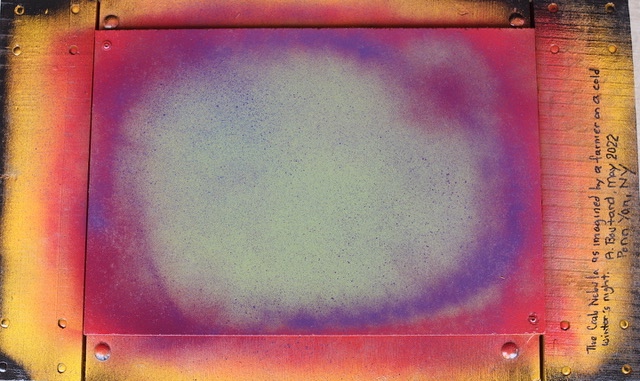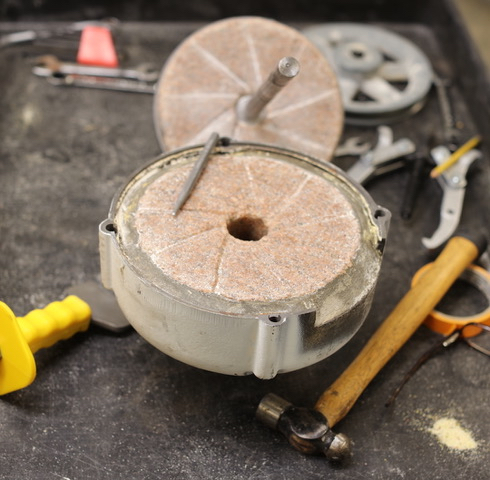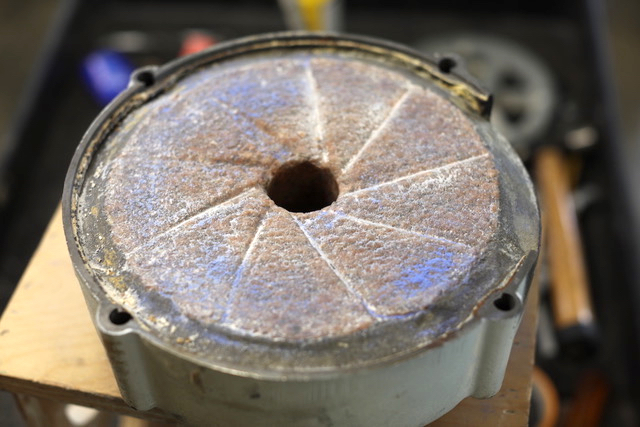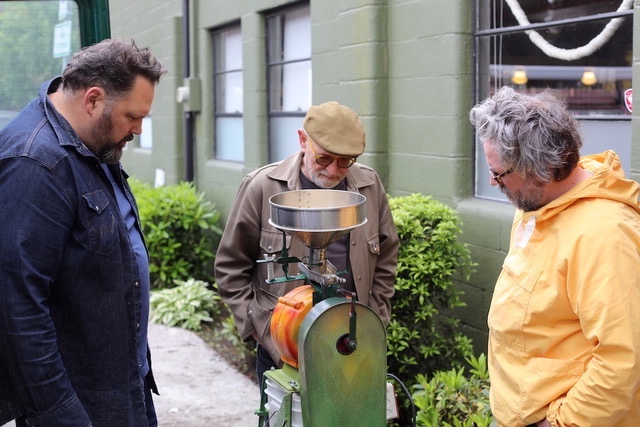
Farm Bulletin: A Farewell
Anthony and Carol Boutard have sold their Ayers Creek Farm and are moving to be near their grandchildren in the Finger Lakes of upstate New York. Here Anthony bids us farewell.
As you may recall, we put our farm on the market in early January. The Huserick family runs the nursery next door and approached us with a solid offer for the farm, neither dithering nor demanding anything in particular. (The oldest brother, Anthony, is known on this side of the property line as “the other Anthony.”) We have known the family professionally as good neighbors, and hard-working, successful farmers, for 24 years. They knew our farm has secure irrigation access by contract with the local irrigation district and excellent soils. Early on, we built quality housing for our farm’s staff, which has proved valuable in a tight labor market. Both nurseries and market farms need reliable water, soils and staff.
We had hoped to have one more open day before the sale, but the task of moving proved formidable. Carol managed the move to Penn Yan in early April and I have been buttoning things up here. The paperwork is all in order and I will handle the signing this week. I have had people ask what will happen to the farm. In the course of 45 years together, we have bought and sold three properties and were tenants in another five. We know, once our shadow leaves this place, it will belong to the Huserick family. We had 24 years to work land, and we are content with our efforts. In Penn Yan, we can still step out on a cold winter’s night and imagine the Crab Nebula floating above us, or catch a shooting star.
One of the buttoning up tasks has been making sure our inventory of grain, beans and preserves will find its way into commerce. They are now in the good care of Wellspent Market and Providore Fine Foods. We included our smaller 8-inch Meadows Mill as part of the deal [iwth Wellspent Market]. It is compact, easily moved upon a Crab Nebula dolly (top photo), and runs off of household current. Manufactured in North Carolina, if a spare part is needed, it will show up a couple days later.
Dressing the Mill
"I say, beware of enterprises that require new clothes. "
- Henry David Thoreau, "Walden Pond, Or a Life in the Woods"
If farmers can’t scrape out an occasion to quote of Thoreau, they are a pretty ratty specimen of that rusticated class. Grist mills need dressing, even if not in the raiment contemplated by old Henry David.

Both of our grist mills have pink granite stones that are quarried in the Appalachians. The stone is very hard but over the course of 18 years and tons of grains, the mill needed attention. I had to replace the augur spring that had broken, embarrassingly as I was providing Noah Cable of Wellspent a tutorial. While the mill was taken apart, dressing the stones made sense. My tool box is 2,772 miles away, so I went to Ace Hardware and picked up some ground chalk, a prick punch and a cold chisel—the needle, thread and scissors of the millwright—along with a puller to remove the drive wheel.
The landscape of the millstone is composed of “lands” or flat areas that taper down to “furrows." There are two stones. The bed stone is fixed to the housing; the traveller rotates. These small grist mills have a simple dress defined by an unbranched furrow. Larger stones have a more complex system of lands and furrows. The chalk is dusted on the traveller and it is turned against the bed to true the stone. The goal is to identify any problematic high areas. The high areas are chipped away using the prick punch. The furrows are cleaned out using the cold chisel. As the millwright hammers on the steel tools, sparks fly from the stone.

with the chisel and punch.
Before reassembling the mill and its drive, I restored the paint. I chose colors reflecting the palette of the muralist and painter, Thomas Hart Benton. One of his students was Jackson Pollock, which freed me up stylistically. The mill housing follows the colors of the corn kernels, while the belt housing is meant to evoke the corn plants in the field with their yellow tassels.

With the grain, beans and mustard safely ensconced at Wellspent and the preserves at Providore, the van and I are ready to make trek up to the Badlands and across to the Upper Peninsula of Michigan, then rambling eastward to Rochester, then Penn Yan. I have the same map of the U.S. that I marked up during our trip to Oregon in 1989. I also have my old Fuji 6x7 camera, a new light meter and 50 rolls of 120 Tri-X film, old school all the way.
Once in Penn Yan, I will continue my plant breeding work. There are several projects I will be working on, including a lovely blackberry variety derived from a chance seedling I found on the farm. I believe it is a natural hybrid between a Chester and a Logan; the flavor is outstanding. I will also be refining our favas, and finishing up the chicory breeding work. Carol will be penning her yen for verse. If you all are passing through the village, be sure to stop by and say hey.
Top photo: The Crab Nebula as Imagined by a Farmer on a Cold Winter’s Night. An original gristmill dolly.
All photos by Anthony Boutard.